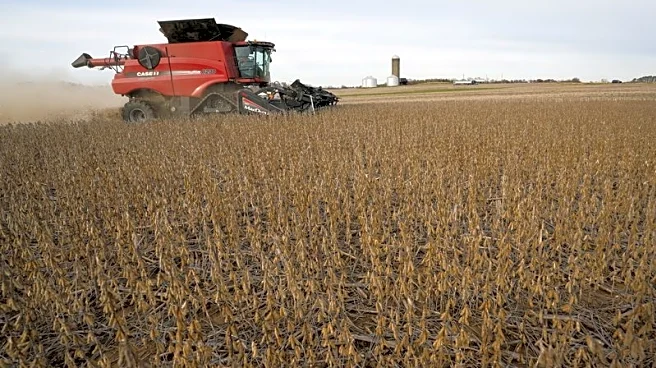What's Happening?
The United States Department of Agriculture (USDA) has projected record corn production of 16.7 billion bushels with yields exceeding 188 bushels per acre, alongside strong soybean yields of nearly 54 bushels per acre. Despite these abundant harvests, U.S. farmers are facing significant challenges in finding profitable markets due to ongoing trade conflicts. The agricultural trade deficit reached $29 billion in the first half of 2025, marking the highest on record. Exports to China have notably decreased, with soybean sales at a 20-year low. As of late July, China had not purchased any U.S. soybean cargo, marking the longest buying delay since 2005. Meanwhile, livestock producers are experiencing reduced supplies, with beef production expected to fall nearly 4% in 2025, potentially leading to higher meat prices for consumers.
Why It's Important?
The current situation underscores the vulnerability of U.S. agriculture to international trade dynamics. The shift from a long-standing agricultural trade surplus to a deficit highlights the impact of tariff disputes and trade barriers on American farmers. The decline in exports, particularly to China, a major market for U.S. soybeans, poses a significant economic threat to the agricultural sector. Additionally, the reduction in livestock production could lead to increased consumer prices for meat, affecting household budgets. The ongoing trade tensions and high tariffs, averaging 15.2%, the highest since World War II, add to the uncertainty faced by farmers, who must navigate rising input costs and declining grain prices.
What's Next?
Farmers are advised to prepare for low returns over the coming years, as suggested by agricultural experts like Professor Gary Schnitkey from the University of Illinois. The industry may need to explore alternative markets and strategies to mitigate the impact of trade conflicts. Policymakers might also consider negotiating trade agreements to alleviate tariff pressures and open new markets for U.S. agricultural products.













